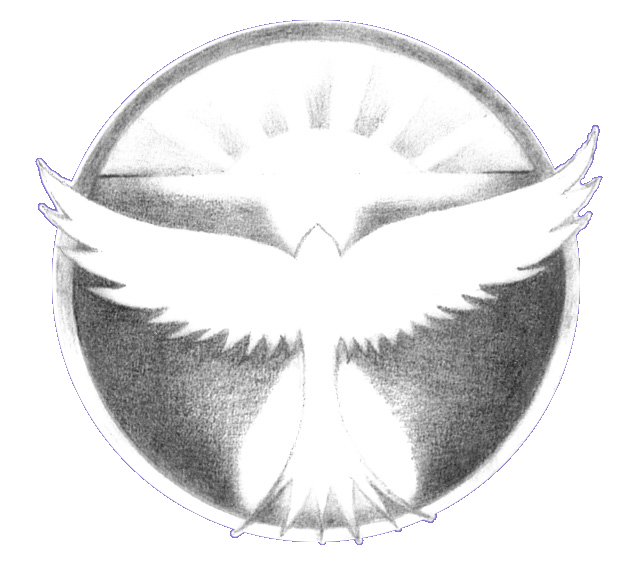Breath of Life
Biodynamic Craniosacral Therapy
Simon Gosling, PACT. Mbl. 022 0217076
Biodynamic Craniosacral Therapy
Biodynamic Craniosacral Therapy is practiced on a table with the patient fully clothed. The therapist makes a gentle 'floating' contact on the patient and much importance is placed in patient comfort and ease. If the patient's body is to direct the work, it needs to feel at ease and empowered. The therapist then is able to remain in a neutral, non-judgemental place whilst 'listening' to or palpating the nuances of the fluctuation of cerebrospinal fluid.
When healthy, cerebrospinal fluid surges and settles as it travels inside the dural tube, along the spinal canal and around the brain. We are only now, scientifically, beginning to understand the importance of this fluid to our functioning as a support and cushion of the neural tissue and a conveyor of nourishment and messenger molecules from the brain to the body and back again.
Usually what we feel as therapists is that healthy fluctuation is being restricted by compression, contusion, lesion, torsion or other irregular conditions in the patient. Our job then is to appreciate the inherent resources of the patient and in doing this bring their Health to bear on these irregularities. This has been compared to feeling a ping pong ball move over a sheet when you are holding the edges and requires the therapist to hold a three dimensional view of the patients anatomy to direct that Health as defined by fluid flow.
In this sense, Biodynamic Craniosacral Therapy is truly holistic, looking to the Health of the patient for both guidance and then using that Health to effect change that the patient is able to sustain. In most instances the patient will commit to a number of sessions allowing the practitioner to gently 'nudge' their system back to healthy functioning. Practitioners often suggest that clients become sensitive to the demands of their own Health and use this to dictate regularity of further treatment. Indeed, many patients choose to move away from the rescue model, coming for 'tune ups' on a regular basis as a means to live their optimal potential.
Because of the non-invasive nature of the work, Biodynamic Craniosacral Therapy is useful for all stages of life. In my own practice, I particularly enjoy working through the stages of pregnancy and birth with mums and babies. Women who have recently become pregnant will start a course of treatment to ease the potential strains of carrying a baby for nine months. Once that baby is born, usually ten days afterwards, the mum will come to me for work on both her and baby. Due to the exemplary practices of midwives in New Zealand, birth here is less interventional and traumatic for both mothers and babies than in the UK or Australia. Nevertheless, it is a wonderful experience for a baby to receive gentle healing touch from an adult after the dramatic transition from womb to world. Many seemingly natural discomforts like windy-ness, colic, latching problems and sleep difficulties disappear during sessions with little ones. It is becoming common knowledge that all babies benefit from receiving cranial work after birth.
Cranial work is also useful for many childhood problems such as the congestive issues of 'glue ear' and asthma. This extends however to such complaints as dyslexia, learning difficulties, borderline autism and behavioural problems. If undiagnosed, the effects of birth and early trauma can 'knock on' into childhood, debilitating the child during their critical stages of development and limiting their potential.
In contrast, my oldest patient was ninety-four. The elderly, often, have been sadly excluded from receiving touch and find the work a great comfort. For this reason I have worked with the terminally ill as well, holding their Health as they make the difficult transition towards a change of state. Whatever your religious beliefs, it is true to say that we can feel the effect of someone's final transition long after that person has ceased to breathe.
In between the events of birth and death, there is a vast array of potential trauma that the human body can experience and in fourteen years of cranial practice, I have seen a wide variety of these. Of course a large amount of this work is specific to the head and neck, such as severe head injury, migraine or whiplash. Also working primarily with neural tissue, we work a lot with nerve facilitation and it's effects on specific parts of the whole body. Indeed, being aware of fluctuation throughout the body, we are able to palpate cranial movement in a leg or toe, knee or wrist.
Patients also tend to see me with complicated, inexplicable complaints after exhausting a lot of other modalities. The nature of deeply held chronic disease often requires continual work over a period of months to reach any positive resolution. This is often a journey of significance for the patient as layers of long held trauma gently peel from the surface, building resources that have been squandered maintaining disease, Whilst this can be a hard road, the benefits can be incalculable. For example, a woman who came over eighteen months with a history of lumbar pain and repeated miscarriages now has three healthy children.
Powered by Cactus Software













